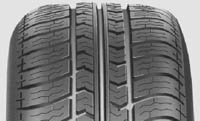|
Компания "Шина-ДВ" - Продажа автошин в Хабаровске на avtoshina-dv.ru! |
 |
 |
|

Toyota-Geschichte im 21. Jahrhundert
Um die Jahrhundertwende überschritt Toyota die Marke von 100.000.000 produzierten Autos für den heimischen Markt. 2002 wurde beschlossen, ein eigenes Team in der Formel 1 zu gründen. Leider war Toyota trotz eines riesigen Budgets, selbst nach den Maßstäben der Royal Races, nie in der Lage, in dieser Art von Motorsport erfolgreich zu sein. Eine Zeit lang lieferte das Unternehmen weiterhin Motoren an andere Teams, doch 2009 beschloss das Management, die Aktivitäten des Autoherstellers in der Formel 1 einzuschränken.
 Qashqai
And Qashqai is an unconditional participant in the sales ratings of all crossovers sold in Russia and always occupies the top lines.
Since 2007, more than 2 million units of this model have been sold in our country. The manufacturer is closely monitoring that the trend for high sales continues and therefore constantly stirs up interest in the car.
Every few years, the Qashqai undergoes a “tuning” or completely changes generations. Sometimes the changes seem imperceptible, and sometimes they change the car a lot. However, car market experts note that with each new version, the car becomes:
larger (overall dimensions become slightly wider and longer)
more comfortable
more practical
Nissan Qashqai is held only in the UK, and only in the version with a gasoline engine.
Therefore, the domestic motorist does not have to choose especially. On the one hand, this is good - the British collection is quite high quality. On the other hand, the localization of production could lead to a reduction in cost.
Über 10 Jahre lang, von 1992 bis 2003, wurden alle europäischen Nissan-Modelle im Nissan Design Center in München entworfen, das im Januar 2003 nach London, dem Herzen der europäischen Designindustrie, umgezogen ist.
Im März 2003 wurde der neue Nissan Micra mit dem European Automotive Design Award 2003 ausgezeichnet.
Im Jahr 2002 transportierte Nissan 2.761.375 Fahrzeuge, 10,5 % mehr als 2001. Auf dem Inlandsmarkt in Japan produzierte das Unternehmen 1.444.314 Fahrzeuge vom Band, 13,5 % mehr als im Vorjahr. Die Pkw-Produktion im Ausland stieg um 7,5 % auf 1.317.061 Einheiten.
Qashqai
And Qashqai is an unconditional participant in the sales ratings of all crossovers sold in Russia and always occupies the top lines.
Since 2007, more than 2 million units of this model have been sold in our country. The manufacturer is closely monitoring that the trend for high sales continues and therefore constantly stirs up interest in the car.
Every few years, the Qashqai undergoes a “tuning” or completely changes generations. Sometimes the changes seem imperceptible, and sometimes they change the car a lot. However, car market experts note that with each new version, the car becomes:
larger (overall dimensions become slightly wider and longer)
more comfortable
more practical
Nissan Qashqai is held only in the UK, and only in the version with a gasoline engine.
Therefore, the domestic motorist does not have to choose especially. On the one hand, this is good - the British collection is quite high quality. On the other hand, the localization of production could lead to a reduction in cost.
Über 10 Jahre lang, von 1992 bis 2003, wurden alle europäischen Nissan-Modelle im Nissan Design Center in München entworfen, das im Januar 2003 nach London, dem Herzen der europäischen Designindustrie, umgezogen ist.
Im März 2003 wurde der neue Nissan Micra mit dem European Automotive Design Award 2003 ausgezeichnet.
Im Jahr 2002 transportierte Nissan 2.761.375 Fahrzeuge, 10,5 % mehr als 2001. Auf dem Inlandsmarkt in Japan produzierte das Unternehmen 1.444.314 Fahrzeuge vom Band, 13,5 % mehr als im Vorjahr. Die Pkw-Produktion im Ausland stieg um 7,5 % auf 1.317.061 Einheiten.
|
|